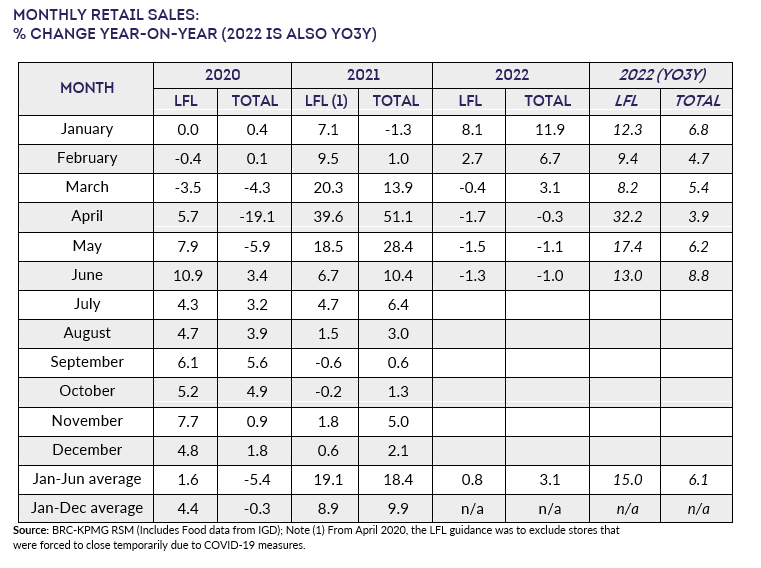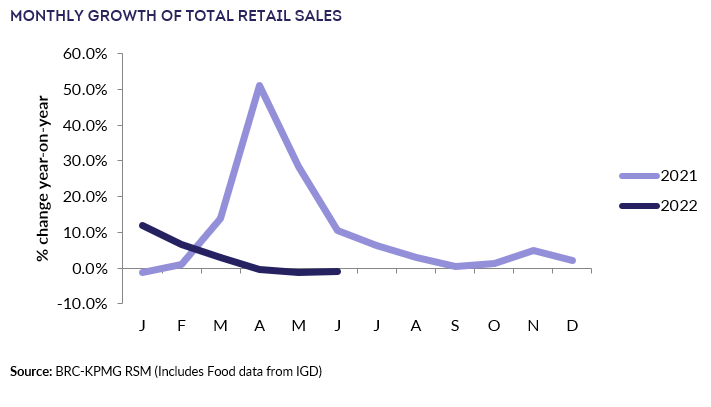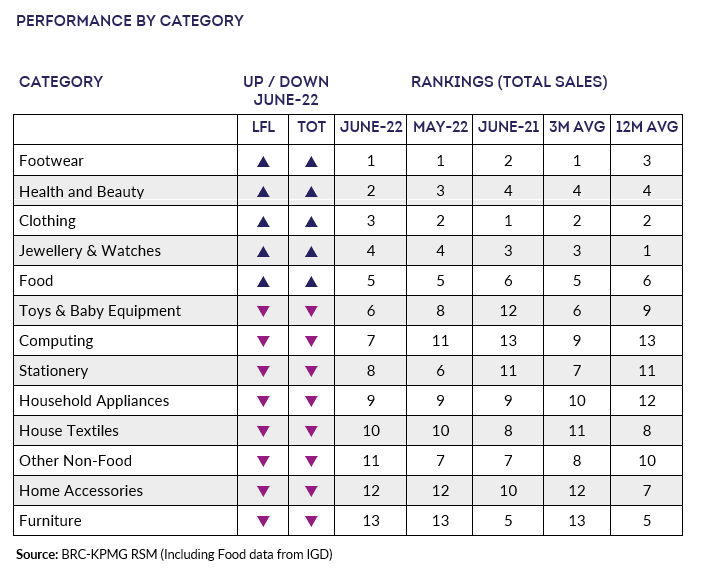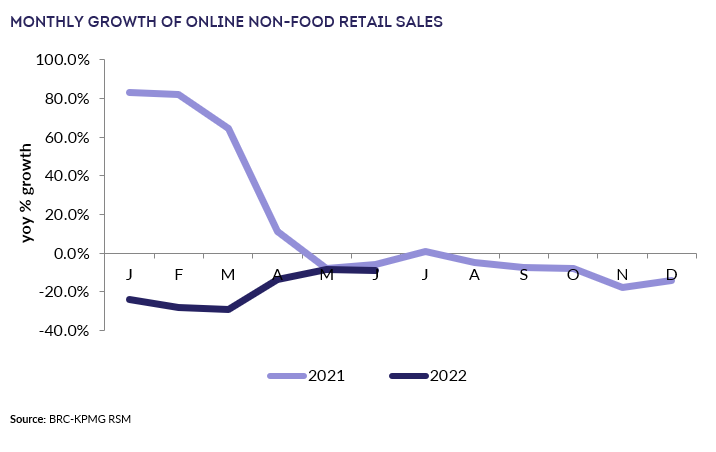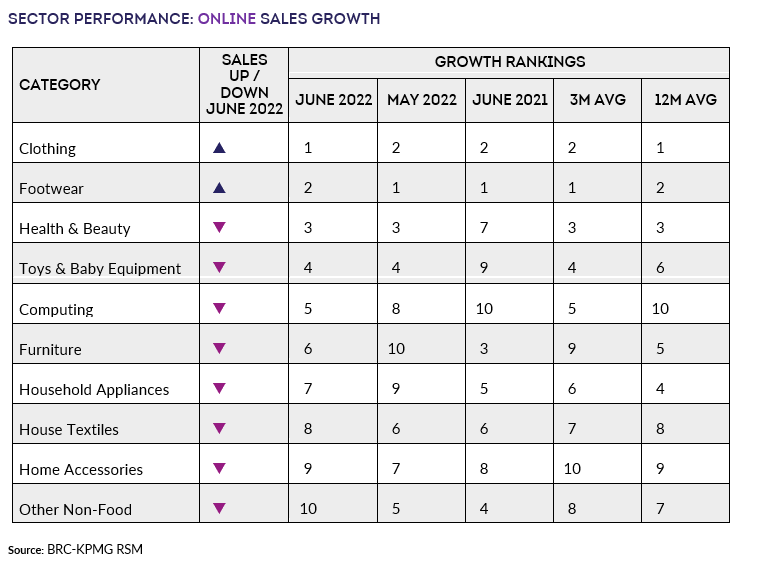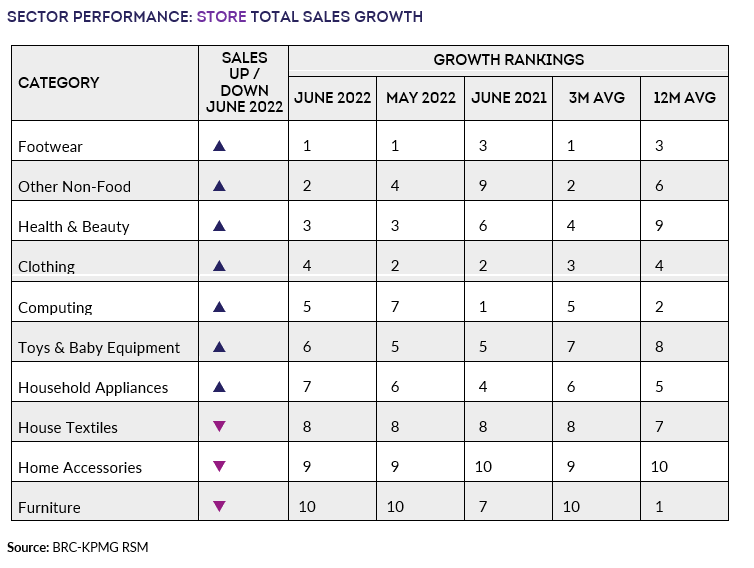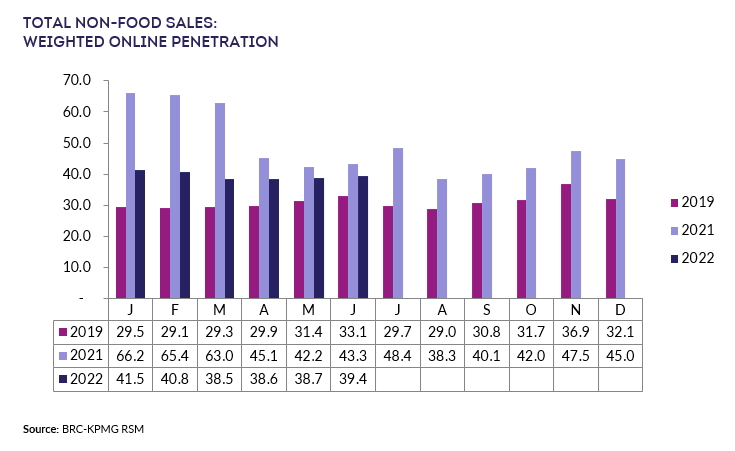During 2020/21 much of retail bounced between being open and
closed, significantly impacting sales and changing consumer
behaviours. We are now at a stage where year-on-year comparisons
are all post the third lockdown, meaning we will no longer be
providing Year-on-3-year (Yo3Y) comparisons in the bullets. Total
sales on the Yo3Y basis can still be found in the first table.
Sales figures are not adjusted for inflation. Given that both the
June SPI (BRC) and May CPI (ONS) show inflation running at
historically high levels, the small drop in sales masked a much
larger drop in volumes once inflation is accounted for.
Covering the five weeks 29 May – 2 July
2022
- On a Total basis, sales decreased by 1.0% in June, against an
increase of 10.4% in June 2021. This is below the 3-month average
decline of 0.8% and the 12-month average growth of 3.0%.
- UK retail sales decreased 1.3% on a Like-for-like basis from
June 2021, when they had increased 6.7%. This was above the
3-month average decline of 1.5% and below the 12-month average
growth of 1.0%.
- Over the three months to June, Food sales increased 2.2% on a
Total basis and 1.6% on a Like-for-like basis. This is above the
12-month Total average growth of 0.6%. For the month of June,
Food was in growth year-on-year.
- Over the three-months to June, Non-Food retail sales
decreased by 3.3% on a Total basis and 4.2% on a like-for-like
basis. This is below the 12-month Total average growth of 5.0%.
For the month of June, Non-Food was in decline year-on-year.
- Over the three months to June, In-Store sales of Non-Food
items increased 2.2% on a Total basis and 0.6% on a Like-for-like
basis since June 2021. This is below the 12-month growth of
35.5%.
- Online Non-Food sales decreased by 9.1% in June, against a
decline of 5.9% in June 2021. This is above the 3-mth average
decline of 10.3%.
- The Non-Food Online penetration rate decreased from 43.3% in
June 2021 to 39.4% this June.
Helen Dickinson OBE, Chief Executive | British Retail
Consortium
“Sales volumes are falling to a rate not seen since the depths of
the pandemic, as inflation continues to bite, and households cut
back spending. Discretionary purchases were hit hard, especially
white goods and homeware, while consumers also traded down to
cheaper brands in food and non-food alike. While the Jubilee
weekend gave food sales a temporary boost, and fashion sales
benefited from the summer holiday and wedding season, this was
not enough to counter the substantial slowdown in consumer
spending.
“Retailers are caught between significant rising costs in their
supply chains and protecting their customers from price rises.
The government needs to get creative and find ways to help
relieve some of this cost pressure – the upcoming consultation on
transitional relief is a golden opportunity to ensure that
retailers aren't overpaying on their business rates bills.
Government action on transitional relief would make a meaningful
difference to retailers’ costs and ease pressure on prices for
customers.”
, UK Head of Retail at
KPMG | KPMG
“Retail sales continued
to slide for the third month in a row, albeit down just 1% on
what was a strong June 2021 and against a backdrop of
unprecedented price rises on the high street.
“Online shopping continued to move in reverse with total sales
down 9% as non-food purchases related to the home, such as
furniture, home appliances and computing, suffered the biggest
falls in online spending. The jubilee weekend, which saw
street parties across the UK, provided some relief for food and
drink retailers as sales grew by nearly 1.5% year on year,
despite the rising cost across most items.
“As the cost living crisis continues to deepen, retailers face
walking a fine line between protecting margins and further
denting consumer confidence by passing on price rises whilst
negotiating with their suppliers to share the cost increases.
Cost and efficiency will dominate retailers’ agendas as they are
forced to make some tough decisions on which products make it to
the shelves in order to remain price competitive for
consumers. With a long run of hot weather predicted and
many consumers choosing to holiday at home this summer, retailers
will be hoping that the feel-good factor begins to improve
confidence amongst some shoppers – as presently overall
confidence levels are lower than sales may suggest.”
Food & Drink sector performance | Susan Barratt, CEO
| IGD
“Food and drink sales fluctuated week by week in June, and with
volume sales down and value sales up, we can clearly see
inflation coming through. However, the overall downward sales
trend for volumes means the outlook continues to be challenging,
although good weather might provide a welcome boost in July.
“IGD’s Shopper Confidence Index reached a new record low in June
as shoppers contend with the cost-of-living crisis. We’re
forecasting that food inflation will reach 15% this summer and
our ShopperVista research shows that shoppers are increasingly
trying to save money in every part of their lives.
Unsurprisingly, shopping habits are changing; some 60% of
shoppers are now spending time to save money, up from 55% in
March. With record petrol prices, being able to walk to a grocery
store is also increasingly important with 27% of shoppers
agreeing this is a driver of store choice, compared to 24% in
May.”
